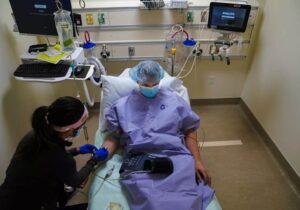Most of us have all been there at one time or another. We show up at a doctor’s office with a medical concern that we’ve watched change, grow, or fester. Sometimes it’s a pain that may shift in terms of intensity or a nagging symptom that just won’t go away. And then, even if we’re lucky enough to see a physician, our concerns are ignored or dismissed. We leave the doctor’s office feeling confused, bewildered, and wondering what just happened.
Medical gaslighting is a practice that needs to stop. It causes harm to patients (here’s my Op-Ed in the Baltimore Sun on this important issue, also available here as a PDF). Education and training programs for healthcare professionals must be adjusted to address this issue. And patients must also be proactive with their medical care. Here are steps for patients to take:
- Listen to your body – Trust your instincts when your body is telling you something is physically wrong
- Take action – Do not hesitate, or second-guess as to whether or not to seek medical care
- Be prepared – Brainstorm a list of questions related to your concern, write these down, and be sure to bring the list to your appointment
- Be specific – If you have arm pain, is the pain in one spot or does it travel down your arm, when does it hurt – all the time or just at certain times (and what are those times), is it a sharp pain or a dull pain. The more specific you can be, the more this will help a physician with a diagnosis.
- Bring Support – Bring someone with you to the appointment to take notes, to listen, and to debrief with you after the appointment
- Get a 2nd, 3rd, or 4th opinion – If a physician isn’t listening to you, dismisses your concerns, or you are unsure about a diagnosis do not hesitate to seek a 2nd or a 3rd opinion from another medical professional.
Taking these simple steps may not stop medical gaslighting from occurring but will help the patient to be better prepared and to counter medical gaslighting when it happens.



